The H1B3 visa is a nonimmigrant (temporary) visa for persons who are prominent fashion models that have distinguished merit and ability, and they will be working in a job that requires a prominent model. In other words, the H1B3 visa fashion model must be accomplished and well-known in the industry and is coming to the United States for a job that requires a fashion model of their caliber.
- 1.
- a.
- 2.
- 3.
- a.
- 4.
- 5.
- a.
- 6.
- 7.
- 8.
- 9.
- 10.
- a.
- b.
- c.
Table of Contents
There are 2 types of H1B visas: (1) the cap-subject H1B visas and (2) the cap-exempt H1B visas.
Cap-Subject H1B Visas
A fashion model under the H1B3 visa is categorized as a cap-subject H1B visa. A cap-subject H1B visa means that the H1B visa petition is affected by the total amount of H1B visas that can be given out that year (which usually means that the H1B visa petition may have to enter the lottery system for selection if the amount of H1B visa petitions received is more than the H1B visas that can be given out that year).
H1B Visa Subcategories
The cap-subject H1B visa has 2 main sub-categories: (1) the regular cap (for persons who have a bachelor’s degree or qualified equivalent experience) which has 65,000 visas each fiscal year and (2) the master cap (for master’s degrees or higher degrees) that 20,000 visas each fiscal year. The regular cap (65, 000 visas) additionally has to also set aside 1,400 visas for Chile nationals and 5,400 visas for Singapore nationals under the H1B1 visa.
Even though the requirements for H1B3 visa fashion models do not specifically fit under the language of the cap-subject H1B visa, H1B3 visa fashion models are categorized as cap-subject H1B visas which typically subjects their case to go through the H1B visa lottery system.
When the amount of H1B visa petitions received is more than the quota of the H1B visas that can be given out that year, the foreign worker’s H1B visa petition will have to enter a lottery system that randomly selects which H1B visa petitions can continue to be reviewed for that year.
H1B Visa Filing Time
The process of filing a cap-subject H1B3 visa petition starts in March and ends when the H1B3 visa fashion model starts employment on October 1 of that same year (i.e., October 1 is the earliest date that the H1B3 visa fashion model can start working for the U.S. sponsoring employer).
The cap-subject H1B3 visa petitions must be electronically registered with the USCIS during March 9 to March 25 and those properly registered will go through the H1B visa random selection process (lottery). H1B3 visa registrants that are selected will be notified by March 31 and the H1B3 visa petition can be filed during April 1 to June 30. Additional H1B3 visa registrants may be selected in July or August if the cap (quota) that year is not filled.
eng-1-1024x427.jpg)
Cap-Exempt H1B Visas
A cap-exempt H1B visa means that the H1B visa petition is not affected by any limitation on the number of visas that can granted each year (there is no set limitation on the total amount of cap-exempt H1B visas that can be given out) and it can be filed anytime throughout the year unlike cap-subject H1B visas.
Cap-exempt H1B visas are for: (1) certain types of employers, (2) persons who are already counted in the initial cap-subject H1B visas, (3) certain physicians (J1 visa medical doctors) with a Conrad waiver or federal program waiver, and (4) H1B visa workers in Guam and the Commonwealth of the Northern Marina Islands (CNMI).
A qualified H1B3 visa worker must (1) be a prominent fashion model in the industry, (2) have distinguished merit and ability, and (3) work in a U.S. job that requires a prominent fashion model. Under the H1B3 visa, prominence means a high level of achievement in the fashion modeling industry shown by the H1B3 visa fashion model being well-known, leading, renowned for having a significantly higher degree of skill and recognition than other usually encountered fashion models.
The original statutory wording for qualified persons for H1B3 visas can be found in 8 CFR 214.2(h)(4)(i)(C).
-eng-1024x427.jpg)
The initial H1B3 visa grants a period of stay up to 3 years (or to the validity period authorized by the LCA) and the renewals (extensions of stay) are granted for up to an additional 3 years until the maximum limit of 6 years is reached. Any time spent physically outside the United States or under any other nonimmigrant visa status (except the H1B visa or L1 visa) while in the United States can be recaptured for the maximum limit of 6 years of the H1B3 visa status. After the maximum 6 years of the H1B3 visa is reached, the person must remain physically overseas (outside the United States) for at least 1 year before filing for a new H1B visa petition.
The exceptions to the H1B3 visa 6-year limitation are when the person:
- Falls under the American Competitiveness in the 21 Century Act (AC21) where the H1B3 visa fashion model’s PERM labor certification request, green card petition (Form I-140), or adjustment of status (Form I-485) is pending
OR
- Resides overseas and commutes regularly to the United States for part-time employment
OR
- Did not reside continually in the United States and the employment in the United States was intermittent, seasonal, or was in total six months or less per year
The exceptions (excluding the AC21 scenario) cannot be used if the H1B3 visa fashion model’s dependent family members resided continuously in the United States under their H4 visa status.
Previously Held L1 Visa Status and H1B Visa Status
For fashion models who have held an L1 visa status before their H1B visa status, the time they were under the L1 visa status will be counted toward the maximum time limit of the H1B visa status. For example, if the fashion model spent 1 year in an L1A visa status and then changed into an H1B3 visa status, the fashion model’s maximum time on their new H1B3 visa status would be 5 years (the 1 year in L1A visa status takes away 1 year from the H1B3 visa’s 6-year maximum limit) instead of 6 years.
H1B3 Visa Grace Period (Additional Periods of Authorized Stay)
The H1B3 visa fashion model is allowed to enter the United States 10 days before the start date and stay an additional 10 days after the end date (which should be included on the Arrival/Departure Records Form I-94). However, the H1B3 visa fashion model cannot work in those additional 20 days.
There is also a 60-day grace period of authorized stay in the United States if the H1B3 visa fashion model’s employment is terminated before the visa end date. The 60-day grace period can only be used once during each authorized validity period and cannot be added up (which means the 60 days cannot be split up into multiple periods of time). For example, an H1B3 visa fashion model with an approved 3-year H1B3 visa validity cannot use the grace period for 10 days and then later use another 50 days during those 3 years (i.e., the one-time 60-day grace period is seen as being used up after the first use of the 10 days under this situation). Typically, a new grace period can be available when the H1B3 visa fashion model changes to a new employer or their H1B3 visa is extended.
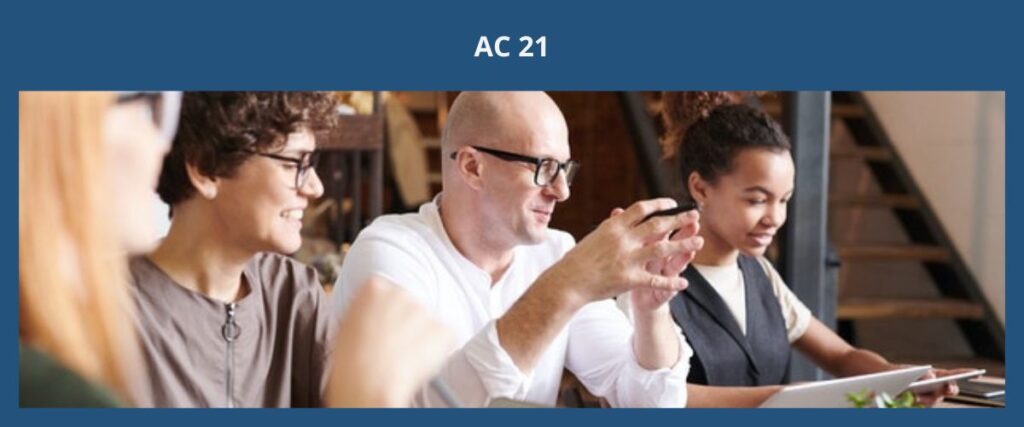
Certain H1B3 visa fashion workers can extend their H1B3 visa beyond the 6-year maximum limitation in 1-year or 3-year increments under the AC21 and/or 21st Century DOJ Appropriations Authorization Act if the H1B3 visa fashion model satisfies 1 of the 4 following scenarios:
- (1)
- The H1B3 visa fashion model who has a PERM labor certification or green card petition (Form I-140) that was filed before the end of the 5th year of their H1B3 visa status can extend their H1B3 visa status in 1-year increments.
- (2)
- The H1B3 visa fashion model who has a PERM labor certification or green card petition (Form I-140) that has been pending for more than 365 days can extend their H1B3 visa status in 1-year increments.
- (3)
- The H1B3 visa fashion model who has a green card petition (Form I-140) pending for more than 365 days since the date that their PERM labor certification was filed with the DOL can extend their H1B3 visa status in 1-year increments.
- (4)
- The H1B3 visa fashion model who has an approved green card petition (Form I-140) but their immigrant visa (green card) is not available because of the per country (or worldwide) limitations can extend their H1B3 visa status in 3-year increments. (For example, persons born in India, China, or Mexico.)
U.S. Employer Can Be Different
The employer filing the H1B3 visa extension does not need to be the same employer as in the PERM labor certification or the green card petition (Form I-140). The H1B3 visa extensions filed beyond the 7th year do not need to use the same PERM labor certification application or green card petition that was used for the first H1B3 visa extension filed beyond the 6th year.
H1B3 Visa 7th Year
The H1B3 visa extension petitions beyond the 6th year can (1) be filed up to 6 months before the requested H1B3 visa extension start date (which should be at least 365 days since the H1B3 visa fashion model’s PERM labor certificate application or green card petition was filed), (2) be filed before the required 365 days has actually elapsed as long as the required 365 days will be satisfied before the requested start date of the H1B3 visa extension, and (3) include any time that is remaining of the maximum 6-year limit (recapturing H1B3 visa time).
Filing While Not Under H1B3 Visa Status
The H1B3 visa fashion model who has an H1B3 visa extension petition filed for them beyond the 6-year limitation can be outside the United States and do not need to be currently under an H1B3 visa status, however, they are required to file for an adjustment of status or for consular processing within 1 year of their immigrant visa (green card) becoming available.
-eng-1024x427.jpg)
The H1B3 visa for the fashion models have three main requirements that need to be satisfied: evidence must be provided to the USCIS to show that (1) the H1B3 visa fashion model is prominent in the industry, (2) the H1B3 visa fashion model has distinguished merit and ability (which in general means that the H1B3 visa fashion model must have a higher degree of skill and fame than normal fashion models), and (3) the U.S. job offered requires a prominent fashion model that can be shown by either involving (a) distinguished events or productions, or (b) organizations or entities that are distinguished (or it has a record of employing prominent persons in the past).
The original statutory wording for qualified persons for H1B3 visas can be found in 8 CFR 214.2(h)(4)(i)(C).
Documents Required for the H1B3 Visa (Fashion Models)
The evidence provided to the USCIS for the H1B3 visa (Fashion Models) must show:
- (A)
- The H1B3 visa job offered must require the services of a prominent fashion model
- (A)
- The H1B3 visa job offered must require the services of a prominent fashion model
This can be shown by satisfying 1 of the 2 following criteria:
- (1)
- The events or productions have a distinguished reputation
- (2)
- The organization or entity has a distinguished reputation or a record of employing prominent persons
H1B3 Visa Sponsoring Employer
The H1B3 work visa petition requires the foreign worker to be sponsored by a U.S. employer (or agent), which means that only the U.S. employer (or agent) can initiate and pay for an H1B3 visa. An H1B3 visa sponsoring employer (or agent) can be an (a) U.S. employer, (b) U.S. agent, or (c) foreign employer through a U.S. agent. The sponsoring employer (or agent) should have a (FEIN) federal employer identification number.
Agents can file H1B3 visa petitions for foreign workers who are traditionally self-employed or who uses agents to arrange short-term employment on their behalf with multiple employers.
Contracts
A contract between the sponsoring employer (or agent) and the foreign H1B3 visa fashion model must be provided. The content must include the terms and conditions of the H1B3 visa fashion model’s employment, the specific wage offered, and details of any additional services provided. Evidence required can include:
- A copy of the written contract. (recommended)
- A summary of the terms of the oral agreement.
When the H1B3 visa sponsoring person (or entity) is a U.S. agent that is performing the function of an employer, the additional evidence required are:
- A written contract with the H1B3 visa fashion model that includes the wage, employment terms, and details on additional services.
- An itinerary that includes definite employment and information on any other services planned.
When the sponsoring person (or entity) is a U.S. agent that is representing both the H1B3 visa fashion model and one or more employers, the additional evidence required are:
- Documents that show the sponsoring U.S. agent is authorized to act as an agent for the H1B3 visa fashion model and all the other entities that the H1B3 visa fashion model is contracted to perform services for.
- The contracts between the H1B3 visa fashion model and all the other entities that the H1B3 visa fashion model will perform services for should include an explanation of the terms and conditions of employment.
- An itinerary that shows the specific dates of the services or engagements, the names and addresses of the contracted entities, and the name and addresses of the establishments, venues, or locations where the services are performed.
When the H1B3 visa sponsoring person (or entity) is a U.S. agent that is filing on behalf of a foreign employer, the additional evidence required are:
- Documents that show the H1B3 visa sponsoring U.S. agent is authorized to file this petition and accept service of process on behalf of the foreign employer.
- Copies of any written contracts (or summary of the terms of the oral agreement) between the H1B3 visa fashion model and the foreign employer.
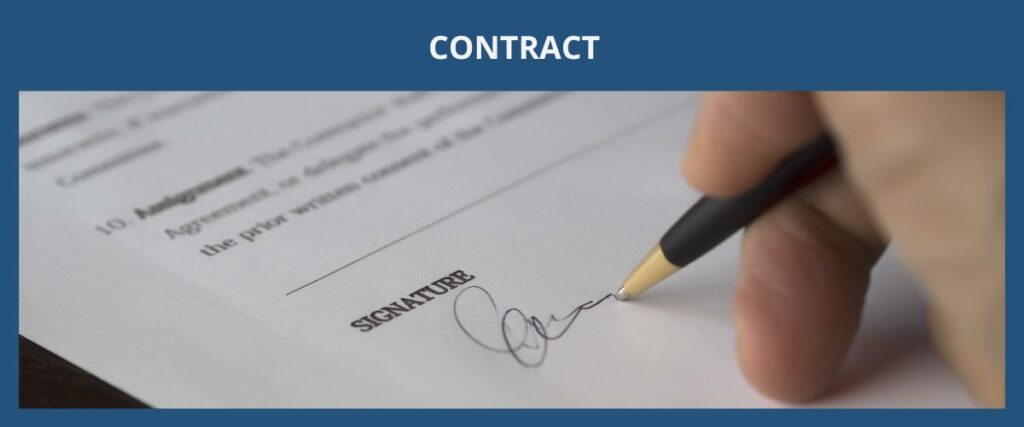
Itinerary and Nature of Activities
An explanation of the activities that the H1B3 visa fashion model will be participating in must be provided. Evidence required can include:
- Itinerary that shows the dates, name(s) of the employer(s) or sponsor(s), and the location of the activities.
- An explanation of the nature of the activities.
- The start and end dates of the activities.
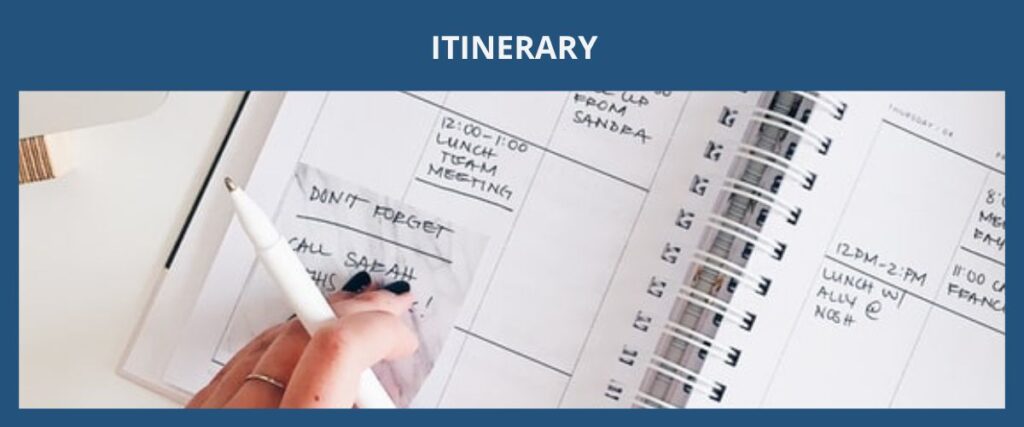
- (B)
- The events, productions, or organizations have a distinguished reputation (or the organization has a record of employing prominent persons)
- (B)
- The events, productions, or organizations have a distinguished reputation (or the organization has a record of employing prominent persons)
Evidence that shows the H1B3 visa job offered requires a fashion model of prominence can include but is not limited to:
- Critical reviews, trade publications, media reports, and articles that show the distinguished reputations of the events, products, or organizations
- Payroll records that show employment of prominent persons in the past
- Letters or affidavits from current or former employers, or recognized experts attesting that the H1B3 visa fashion model has distinguished merit and ability. It should include:
o The writer’s qualifications as an expert
o How the writer reached the conclusion
o The basis used for the conclusion (e.g., copies or citations of the articles used)
- Reviews, certifications, writings, or other documentation that affirms the H1B3 visa fashion model has distinguished merit and ability
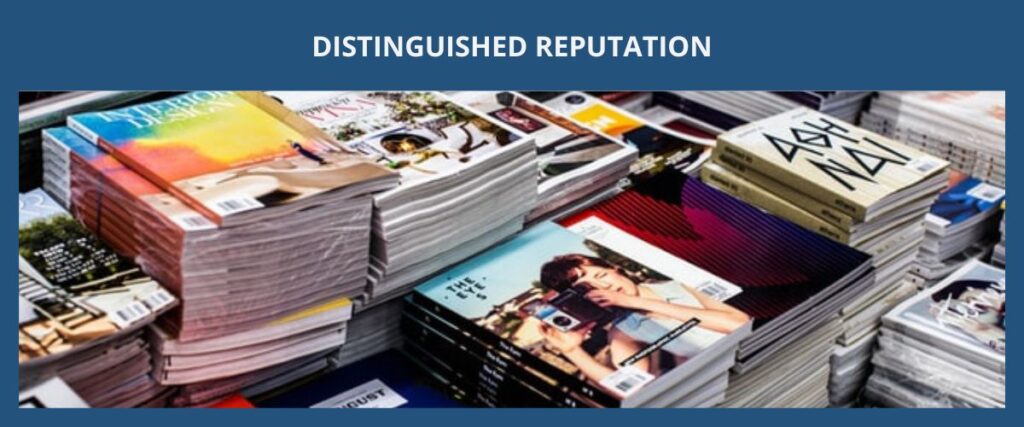
- (C)
- The H1B3 visa fashion model must have distinguished merit and ability
- (C)
- The H1B3 visa fashion model must have distinguished merit and ability
This can be shown by at least 2 of the 4 following criteria:
- (1)
- The H1B3 visa fashion model is recognized (known) on a national or international level and has outstanding achievement in the fashion modeling industry shown by reviews in major newspapers, magazines, trade journals, or other publications
- (2)
- The H1B3 visa fashion model has worked and will be working as a fashion model for employers that have a distinguished reputation
- (3)
- The H1B3 visa fashion model’s significant achievements are recognized by critics, fashion houses, organizations, modeling agencies, or other recognized experts in the field
- (4)
- Commands a high salary or significantly high remuneration shown by contracts or other appropriate documentation
Evidence of the H1B3 visa fashion model’s significant achievements in the industry can include but is not limited to:
- Critical reviews, news stories, articles in major newspapers, magazines, trade journals, or other publications that show the H1B3 visa fashion model is nationally or internationally known
- Documents that show the H1B3 visa fashion model have performed for distinguished employers in the past and will work for a distinguished employer in the United States (e.g., media articles, work verification letters from prior or current employers, etc.)
- Documents that show the H1B3 visa fashion model can ask for a higher salary as compared to what is paid to other fashion models (e.g., contracts, tax returns, wage surveys, media reports of fashion model wages, etc.)
- Affidavits from former or current employers, or recognized experts in the industry verifying the H1B3 visa fashion model has “distinguished merit and ability” includes
- Specific facts on how the H1B3 visa fashion model’s ability and recognition (well-known)
- The expertise of the affiant (i.e., the person who wrote the affidavit)
- How the affiant received the information used (e.g., sources of the information used to come to the conclusion)
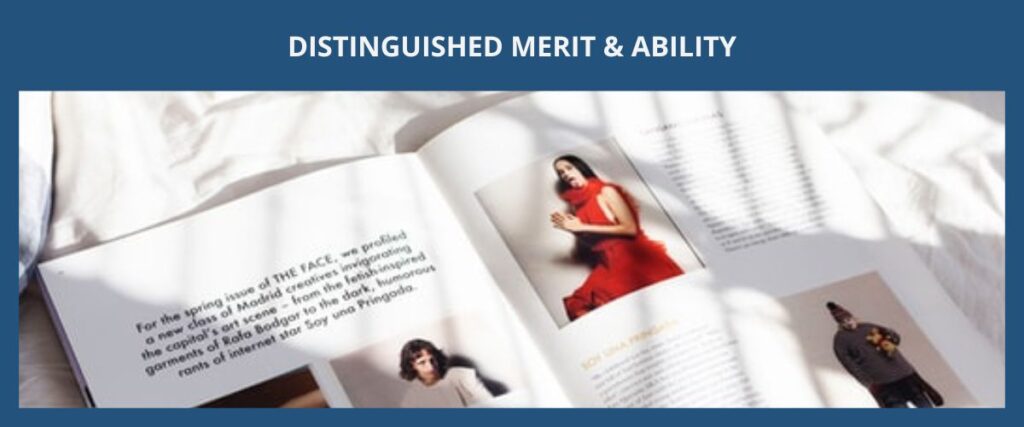
- (D)
- The U.S. employer must be bona fide (real) and has the ability to pay the H1B3 visa fashion model
- (D)
- The U.S. employer must be bona fide (real) and has the ability to pay the H1B3 visa fashion model
An H1B3 visa petition cannot be filed without a U.S. employer sponsoring it (which means that foreign workers cannot apply for an H1B3 visa by themselves). A U.S. employer can include persons (e.g., agents), corporations, partnerships, sole proprietorships, or other organizations or associations in the United States with a tax identification number (Federal Employer Identification Number, FEIN) assigned by the International Revenue Service (IRS).
Documents that show the U.S. sponsoring employer has the ability to pay the wage offered to the H1B3 visa fashion model is typically provided if requested in a Request for Evidence (RFE) and do not to be provided in the initial filing.
Evidence that the U.S. sponsoring employer has the ability to pay the wage offered to the H1B3 visa fashion model can include but is not limited to:
- Federal income tax returns (it should include Forms 1120, 2220, 4562, 5472, 1065 and required schedules K, J-1, L, M-1) for the past 3 years
- State Quarterly Wage Report (which should include the name, salary, and number of weeks worked for all employees)
- Business licenses from the city, county, state and federal government
- Detailed description of the U.S. sponsoring employer’s organization. It should include:
o Company brochures
o Website
o Pamphlets
o Press releases
o Business plans
o Promotion materials
o Advertisements
o Patents
o Articles
o Other documents that show the U.S. sponsoring employer’s products or services
- Organizational chart or diagram (which should include the hierarchy structure, staffing levels, all divisions, identification of the H1B3 visa fashion model’s job position, names and job titles of the people listed)
- List the names and job titles of the H1B3 visa fashion model’s supervisors and subordinates
- List of all employees (which should include names, job titles, immigration status such as H1B, L1, E1, E2, F1, permanent resident, U.S. citizen)
- Description of the H1B3 visa fashion model’s specific workplace. It should include:
o Define the workplace
o The type of building (e.g., warehouse, office suite, apartment, residence)
o How many hours the H1B3 visa fashion model will actually work at the location each week
o Business hours
- Documents that show business is being done (active) at the location. It should include:
o Utility bills
o Telephone bills
o Business licenses
o Payroll documents
o Rent receipts
o Bank statements
- Lease of the business premises must be signed and dated, and include:
o Monthly rental fee
o Total square footage of premises (which should include all office, manufacturing, production, warehouse spaces)
- Property records that show ownership of physical location if not renting
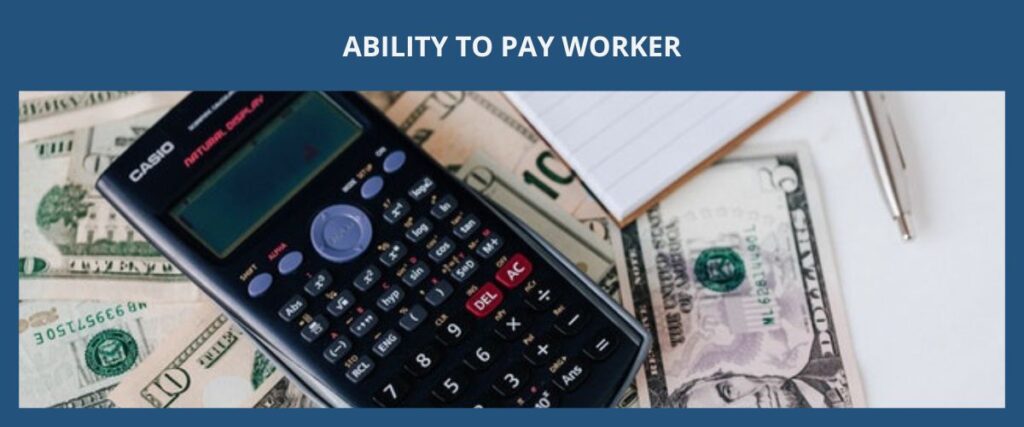
- (E)
- The U.S. employer must have an employer-employee relationship with the H1B3 visa fashion model
- (E)
- The U.S. employer must have an employer-employee relationship with the H1B3 visa fashion model
Under the H1B3 visa petition, the H1B3 visa fashion model must be working for the U.S. sponsoring employer as an employee (which means that independent contractors are not qualified for H1B3 visa petitions). The employer-employee relationship under the H1B3 visa is where the U.S. sponsoring employer has the right to control the work of the H1B3 visa fashion model (e.g., hire, fire, supervision). The employer-employee relationship under the H1B3 visa can be determined by the following factors:
- Location of workplace
- Skill required to perform the specialty occupation work
- The source of tools and instrumentalities required to perform the specialty occupation work
- Duration of the relationship between the U.S. sponsoring employer and the H1B3 visa fashion model
- The U.S. sponsoring employer’s right to hire, fire, assign additional work, set rules and regulations on the H1B3 visa fashion model’s work
- The extent of discretion that the H1B3 visa fashion model has over how long and when to work
- Method of paying the H1B3 visa fashion model’s salary
- The H1B3 visa fashion model’s role in hiring and paying for assistants
- Whether the specialty occupation work is part of the U.S. sponsoring employer’s regular business
- Bona fide (i.e., real) business
- Employee benefits
- Tax treatment of the H1B3 visa fashion model
- The extent of supervision the U.S. sponsoring employer has on the H1B3 visa fashion model’s work
- Whether the H1B3 visa fashion model reports to someone higher in the organization
Evidence that shows the U.S. sponsoring employer must have an employer-employee relationship with the H1B3 visa fashion model can include but is not limited to:
- Written employment contract between the U.S. sponsoring employer and the H1B3 visa fashion model
- A summary of the terms of the oral agreement for the H1B3 visa fashion model’s employment
The original statutory language for the required documentation for H1B3 visas can be found under 8 C.F.R. 214.2(h)(4)(vii)(A).
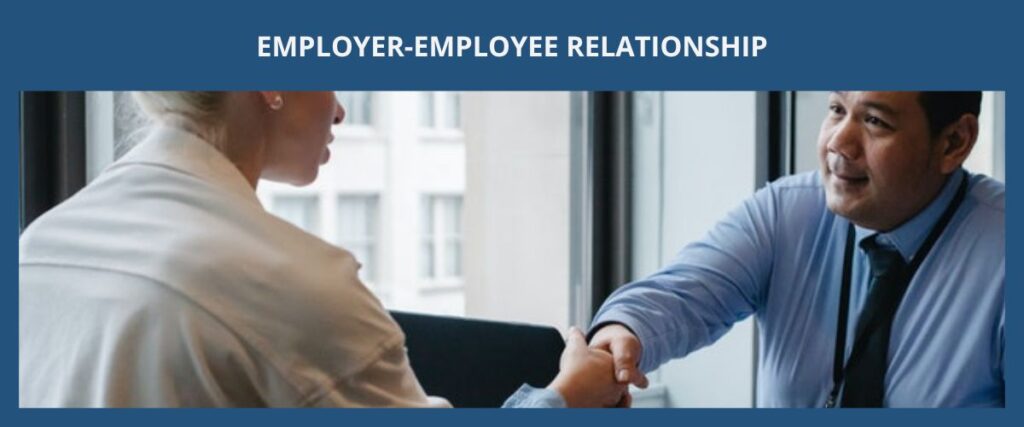
There are 3 main steps in the general process of obtaining an H1B3 visa:
Step 1: Job Offer for a Qualified H1B3 Visa Job Position from U.S. Sponsoring Employer
The H1B3 fashion model must receive a job offer from a U.S. employer that requires the service of a prominent fashion model. The U.S. employer must also be willing to sponsor (pay for and initiate) the H1B3 visa petition for the person which means that the H1B3 visa fashion model cannot self-sponsor themselves for an H1B3 visa.
Step 2: Registering for the Lottery System (if Required that Year), Obtaining an Approved LCA Certification (Form ETA-9035), and Filing the H1B3 Visa Petition (Form I-129) with USCIS
The U.S. sponsoring employer must first register the H1B3 visa fashion model to enter the H1B visa lottery system in the Spring (typically during March) if it is required that year (this happens when the number of H1B visa petitions filed exceeds the amount of H1B visas that can be given out that year).
The H1B visa lottery system will then randomly select the H1B visa petitions that can continue on to be reviewed by the USCIS. If the H1B3 visa fashion model’s petition is selected, the U.S. sponsoring employer will then file for a labor condition application (LCA) certification (Form ETA-9035) with the DOL to obtain wage determination. After the LCA is certified, the U.S. sponsoring employer can then file the H1B3 visa petition (Form I-129) with the USCIS.
Labor Condition Application (LCA)
The employer must have an approved Labor Condition Application (LCA) from the U.S. Department of Labor (DOL). The LCA is filed before the H1B3 visa petition is filed with the USCIS and a copy of the certified LCA should be given to the H1B3 visa fashion model before they start working. The LCA includes information such as the position title, wage, employment dates, location, the source used for determination of the prevailing wage, and the U.S. employer’s attestation that:
- The H1B3 visa fashion model’s wage will be at least the same as the actual wage the employer pays to other similarly employed workers OR the local prevailing wage for the position.
- The working conditions of other similarly employed workers in the area will not be affected adversely.
- There is no strike or lockout at the proposed workplace.
- The LCA has been provided to the union or it has been posted at the proposed workplace in at least 2 conspicuous locations (or through electronic posting on intranet/electronic bulletin boards or direct one-time emails to affected employees) for a period of 10 days within the 30-day period before filing the LCA with the DOL.
Labor Dispute
If a strike, lockout, or work stoppage due to a labor dispute happens at the H1B3 visa work location, the U.S. sponsoring employer is required to notify the Employment and Training Administration within 3 days and must stop the work of the H1B3 visa fashion model at that location. There are fines, prohibitions on filing future visa petitions, and/or random investigations on U.S. employers who are found to be willful violators of the LCA certification.
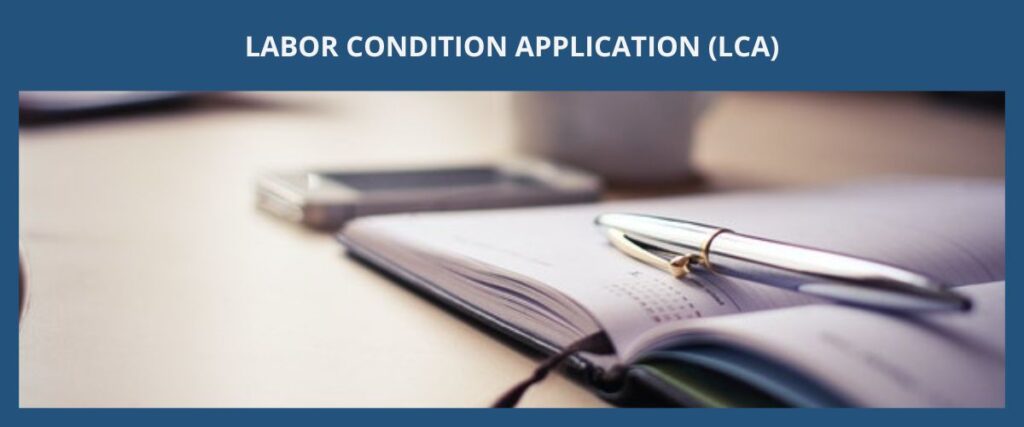
Prevailing Wage and Actual Wage Determination
The U.S. employer sponsoring the H1B3 visa petition is required to pay the H1B3 visa fashion model the prevailing wage or the actual wage paid to other similarly employed workers (whichever is higher).
Prevailing Wage Determination
The prevailing wage is the average rate of wages paid to workers employed in a similar capacity in the area where the H1B3 visa fashion worker’s employment is intended. The National Prevailing Wage Center (NPWC) uses factors such as job title, job description, required education and work experience, location, and employer type (i.e. private corporations, government, academic) to determine the prevailing wage. For example, the same exact job offered in San Francisco, California would likely have a higher prevailing wage than in Champaign, Illinois due to the cost of living in the respective locations.
For academic or research job positions at schools of higher education (or their affiliated or related nonprofits), nonprofit research organizations, or governmental research organizations, the prevailing wage only looks at the wages given at similar institutions in order to avoid requiring academic institutions to match the salaries given in the private industry.
Actual Wage Determination
The actual wage is the amount the U.S. employer pays other employees who are similarly employed and have similar qualifications and experiences. The U.S. employer is also required to give the H1B3 visa fashion model the same benefits offered to other similarly situated employees.
H1B3 Visa Public Access File
The U.S. employer should have a public access file of the H1B3 visa petitions, which includes but is not limited to:
- LCA certification (should include cover pages, U.S. employer’s original signature and the H1B3 visa fashion model’s signature to show that they received a copy)
- Prevailing wage determination (from NPWHC, survey, or other sources that were used)
- Documents that show the wage given to the H1B fashion model (such as an offer letter)
- Notice given to union
- Explanation of how the actual wage was determined
- Summary of benefits offered to the H1B3 visa fashion model (should show that it is the same as what is given to other similarly employed U.S. workers)
Employers who are H1B visa dependent employers or willful violators are subjected to additional attestations if the H1B3 visa fashion model is not qualified as an exempt H1B visa worker (i.e., non-exempt H1B visa worker are workers who are paid less than $60k annually and does not have at least a master’s degree).
Exempt H1B Visa Worker
An exempt H1B visa worker is a person who (1) has an annual wage of at least $60, 000 (includes cash bonuses and similar compensations), or (2) has at least a master’s degree.
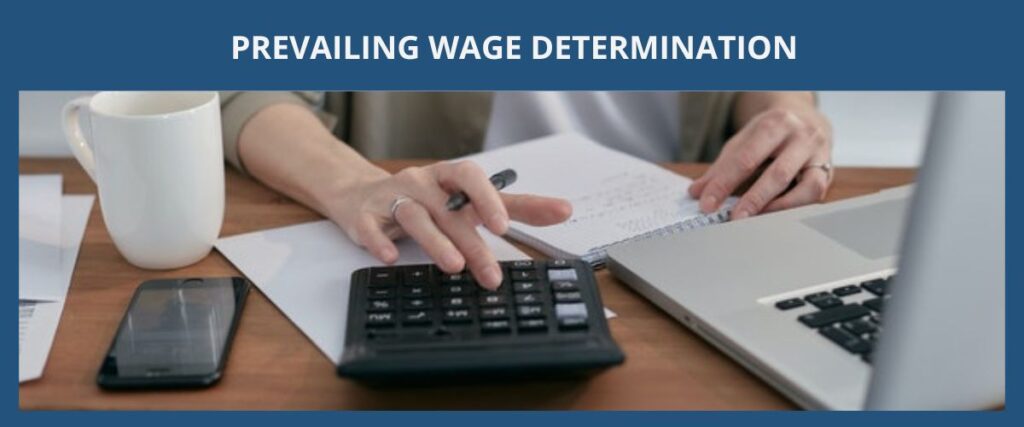
Employers that are H1B visa dependent employers or willful violators (1) cannot have displaced (lay off) similarly situated U.S. employees from 90 days before filing the LCA and 90 days after filing the H1B visa petition, and (2) must have made good faith efforts to recruit U.S. workers for the H1B3 visa position (which should include internal, external and some active recruitment efforts done). The displacements of similarly employed U.S. workers also cannot happen with another employer if the U.S. employer is placing the non-exempt H1B visa worker with that employer.
H1B Visa Dependent Employer
The employer is seen as an H1B visa dependent employer if:
- There are more than 7 H1B visa workers in a company that has 25 or fewer full-time employees
- There are more than 12 H1B visa workers in a company that has 26 to 50 full-time employees
- There are at least 15% of H1B visa workers in a company that has 51 or more full-time employees
Calculation of Employees
Part-time employees can be counted as (1) half of a full-time employee or (2) the total amount of part-time hours can be divided by the full-time hours rounded up to the nearest whole number. Independent contractors or consultants are not included under the definition of employee under the H1B visa dependent employer calculations.
U.S. sponsoring employers that are one of the multiple entities within a controlled group of corporations treated as a single employer by the IRS must also use the single employer definition in the H1B visa dependency calculations.
Employer is Willful Violator
The employer is seen as a willful violator if the employer misrepresented or committed a willful failure in complying with the LCA certification within the previous 5-year period.
Additional Documents for H1B Visa Dependent Employers or Willful Violators
Additional documents are required when the U.S. sponsoring employer is determined an H1B visa dependent employer or a willful violator:
- If there are non-exempt H1B visa workers under the labor condition application (LCA), a summary of recruitment methods (which includes the time frames of the recruitment or related documents) must be provided.
- If there are only exempt H1B visa workers under the labor condition application (LCA), a list of the individuals employed must be provided.
Additional Documents for Employers After Change in Corporate Structure
Additional documents are required when there has been a change in corporate structure of the U.S. sponsoring employer:
- Sworn statement from a representative of the new organization stating that all responsibilities under the predecessor’s LCA are accepted
- FEIN of the new organization
- List of affected LCA and its certification dates
- Description of the new organization’s actual wage system
Liquidated Damages
The U.S. sponsoring employer cannot penalize the H1B3 visa fashion model for leaving to work for another employer, however, it can require the H1B3 visa fashion model to sign an employment contract that contains a liquidated damages clause if permitted under state law.
Multiple H1B3 Visa Filings
The U.S. employer cannot file multiple H1B3 visa petitions for the same fashion model employee to increase the chances of the fashion model being selected in the lottery system. However, the H1B3 visa fashion model can have different U.S. employers file separate H1B3 visa petitions for them if the U.S. employers are not considered “related” and there is a legitimate business need for the H1B3 visa fashion model.

Step 3: Consular Processing or Change of Status (H1B3 Visa)
After the H1B3 visa petition is approved by the USCIS, the fashion model would need to change into their H1B3 visa status which involves either a change of status in the United States, or consular processing at the U.S. consulate or embassy overseas.
Change of status is usually for a person who is already in the United States with another valid nonimmigrant visa status and has maintained a lawful visa status throughout their time in the United States. On the other hand, consular processing is for a person who lives outside the United States or for a person who is ineligible to change their status in the United States due to noncompliance of U.S. immigration law (e.g., overstayed on their previous visa status, worked when they did not have valid U.S. work authorization, the visa status they used to enter the United States does not allow them to change into another type of visa status, etc.)
Person Outside U.S. (or Person Ineligible for Change of Status)
For a person who is residing overseas (outside the United States) or a person who is ineligible for change of status with the H1B3 visa petition (Form I-129), consular processing must be done to obtain the H1B3 visa status. Consular processing involves the person attending an in-person interview at the U.S. consulate or embassy usually in the person’s home country. In certain circumstances, a person can do consular processing in another country as a “Third Country National.”
After the interview approval at the U.S. consulate or embassy, the person would have to be admitted entry into the United States by the CBP officer at the border (usually at the airport) which means that the person would have to physically enter the United States as the final step for the H1B3 visa status to be activated.
Person Residing in the U.S. (Maintained Lawful Visa Status)
For a person who is already in the United States with another valid nonimmigrant visa, there are usually two options available to obtain the H1B3 visa status:
(1) Change of Status: this is the more commonly chosen option where the person states that they would like to change their status without leaving the United States in their H1B3 visa petition (Form I-129). If the person is eligible (no violations of U.S. immigration laws), then their nonimmigrant visa status will be changed upon the approved employment start date listed in the H1B3 visa petition. In cases where the person’s change of status request is denied or the person needs to change it into consular processing, an application for action on an approved application or petition (Form I-824) may be required.
(2) Consular Processing: this must be chosen if a person cannot show that they have maintained lawful visa status in the United States or for any other reasons such as the person needs to travel internationally before the H1B3 visa petition is approved.
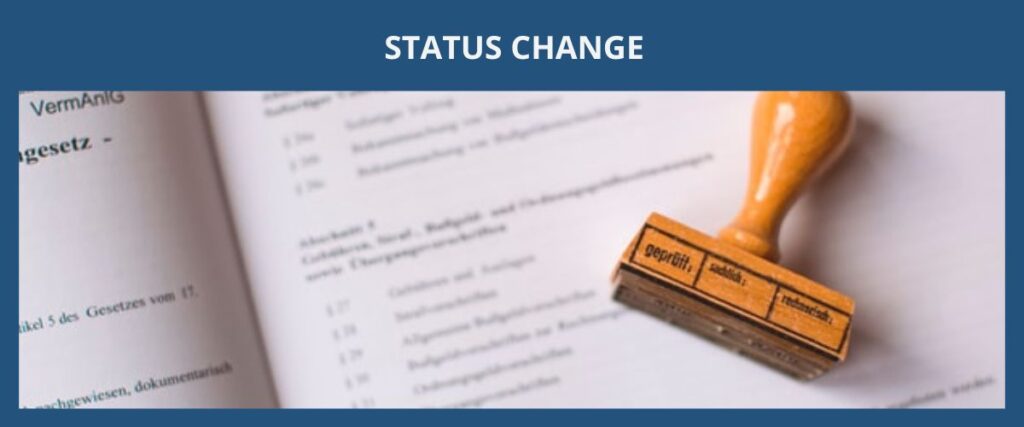
The total time an H1B3 visa takes is consisted of the processing time for the (1) H1B3 visa petition (Form I-129) with the USCIS and the (2) visa application (DS-160) at a U.S. consulate or embassy overseas if the person is not already in the United States or is ineligible to do a change of status within the United States.
A rough estimate for the Form I-129 petition for the H1B3 visa is around 2 to 7 months. The most current estimate of the processing time can be found here. Factors that influence the H1B1 visa petition processing time usually include but are not limited to if there was any Request for Evidence (“RFE”) issued, and the caseload of the USCIS service center and the U.S. consulate or embassy.
Premium Processing for Form I-129 (Expedited Service)
A rough estimate for the Form I-129 petition for the H1B3 visa is around 2 to 7 months. However, a 15-day premium processing (Form I-907) is available for the Form I-129 part of the H1B3 visa petition. Premium processing is an optional expedited service where the USCIS guarantees that the case will be processed within 15 calendar days (not business days). When a notice of intent to deny (NOID) or a request for evidence (RFE) is issued, a new 15 calendar days will start when the USCIS receives a response from the applicant. If the USCIS fails to process within the time frame, a refund of the service fee will be given and the case will continue to be expedited. Please note that USCIS’s guaranteed response may be an approval notice, denial notice, notice of intent to deny (NOID), request for evidence (RFE), or open an investigation for fraud or misrepresentation.
The current premium processing fee for the H1B3 visa is $2500 USD and it can be requested when the original petition is submitted to the USCIS or an upgrade to premium processing can be done when the case is pending.
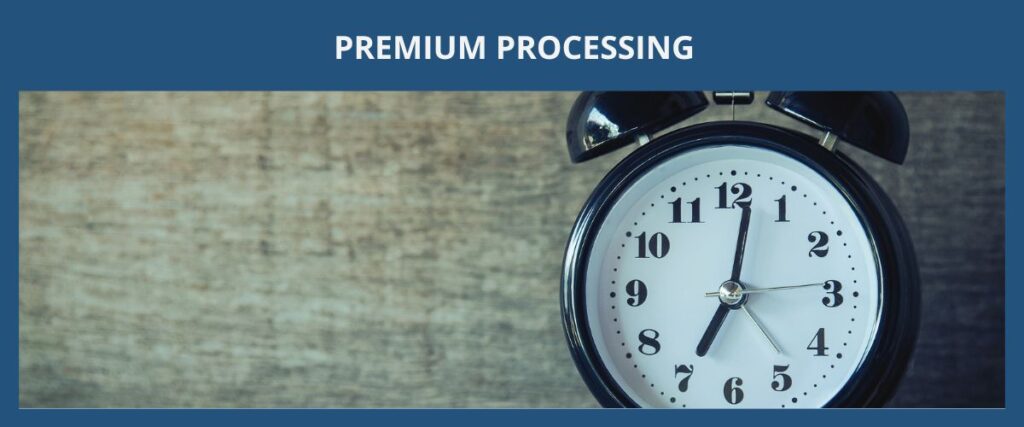
A change in employment for the H1B3 fashion model usually means that (1) the fashion model will be working for another U.S. sponsoring employer, (2) the fashion model will be working for multiple U.S. employers at the same time, (3) the fashion model’s employment terminated earlier than expected, or (4) there was a material change in the fashion model’s employment or H1B3 visa eligibility.
Change in Employer & Portability Rule
If the H1B3 visa worker changes to a new U.S. sponsoring employer, a new H1B3 visa petition must be filed by the new U.S. sponsoring employer and it will not be subjected to the cap restriction (which means it does not need to go through the lottery system again and can be filed during any time throughout the year).
The H1B3 visa has a portability rule where the H1B3 visa worker can start working for the new employer as soon as USCIS receives the filing of the new H1B3 visa petition (as opposed to most work visas where the person must wait until the new visa petition is approved to start working for the new employer). However, if the new H1B3 visa petition is denied, work authorization under the portability rule stops and the H1B3 visa worker should leave the United States immediately because no grace period is given. The portability rule can also be used during periods of authorized stay such as grace periods or periods where previous H1B3 visa petitions are still pending.
H1B3 visa fashion models who used the portability rule to work for a new employer but their new (change of employer) H1B3 visa petition was denied can go back to work for their previous employer if that previously approved H1B3 visa is still valid.
Bridging H1B3 Visa Petitions
An H1B3 visa fashion model who already has a pending change of employer H1B3 visa petition filed for them can continue to have additional new change of employer H1B3 visa petitions filed for them. Bridging H1B3 visa petitions means that the H1B3 fashion model uses the portability rule to bridge multiple pending H1B3 visa petitions to maintain their authorized stay in the United States. However, if any H1B3 visa petition in that bridge (string of filings) is denied, the bridge (authorized stay) will be broken and the H1B3 visa petitions filed after that denied H1B3 visa petition (that broke the bridge) will also be denied unless the H1B3 fashion model’s current H1B3 visa status is still valid.
In other words, if the H1B3 fashion model was in a valid H1B3 visa status when a later H1B3 visa petition was filed and has remained in that valid H1B3 visa status (i.e., the validity period of the original H1B3 visa status have not expired), the later filed H1B3 visa petition can still be approved even if an earlier H1B3 visa petition was denied.
Concurrent Employment
The H1B3 visa fashion model can work (part-time or full-time) for multiple U.S. sponsoring employers at the same time but each employer must file a separate H1B visa petition for the H1B visa worker.
Amended Petition
An amended H1B3 visa petition would be required if there is a material change in the terms and conditions of the H1B3 visa fashion model’s employment or in the H1B3 visa fashion model’s visa eligibility. For example, an amended H1B visa petition would need to be filed if the H1B3 visa fashion model’s work location changed to another location that is outside the geographical area listed in the LCA application with the DOL or the H1B3 visa fashion model is changing from working full-time to part-time.
Early Termination
If the H1B3 visa fashion model’s employment ends before their visa status expiration date, the fashion model will have a 60-day grace period (or till their existing expiration date if it comes earlier) to stay in the United States to seek other employment, change their visa status, or take care of affairs before departing the United States. However, the H1B3 visa fashion worker is not allowed to work during that 60-day grace period.
If the H1B3 visa fashion model’s employment was terminated involuntary (e.g., the H1B3 visa fashion model did not voluntarily resign) before their visa status expiration date, the U.S. sponsoring employer or agent would have an obligation to pay a reasonable transportation cost to the H1B3 visa fashion model to return to their last place of residence before coming to the United States.
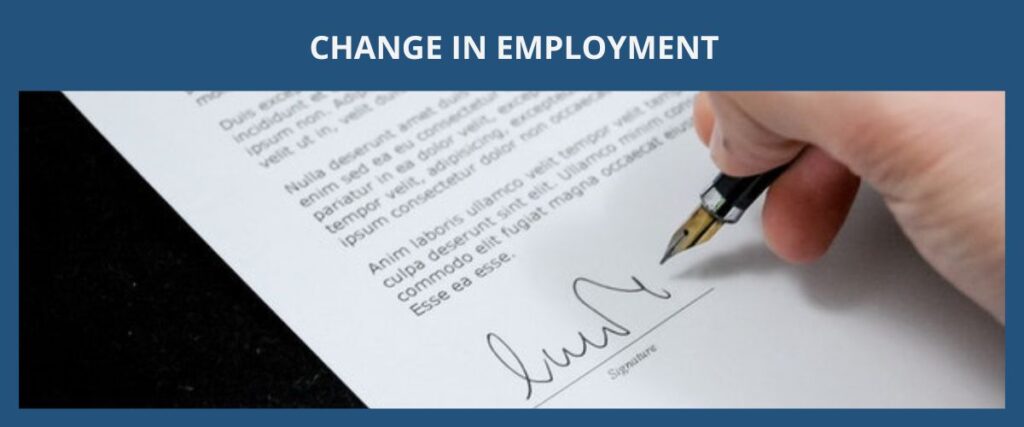
Dependent family members (spouse and unmarried children under 21 years old) of the H1B3 visa fashion model are allowed to stay in the United States under the H4 visa status.
The H4 spouse (not the H4 child) can work with an employment authorization document (EAD, Form I-765) if the H1B3 visa worker (1) has an approved green card petition (Form I-140) or (2) maintains an extended H1B visa status beyond the 6-year limit under the AC21 §§106(a) and (b) which includes H1B visa workers who have a PERM labor certification application or green card petition (or application) pending for more than 365 days or under the AC21 §104(c) is waiting to change into a green card status with as adjustment of status or consular processing due to per country limitations.
Dual intent visas allow the foreign person to have both an intent to temporarily stay in the United States and an intent to permanently stay in the United States. The intention to permanently stay in the United States can be shown when the foreign person has a pending green card petition with the USCIS or an approved PERM labor certification from the U.S. Department of Labor.
The H1B3 visa is a dual intent visa which means that it is possible for the person to have a green card (permanent residency) petition pending while still being able to maintain and extend (renew) their H1B3 visa status in the United States.
The H1B3 visas are for well-known fashion models who have skills and a reputation that exceeds what is normally seen in the fashion modeling industry. The H1B3 visa fashion models must be coming to the United States to work in a job that requires a model of their caliber.
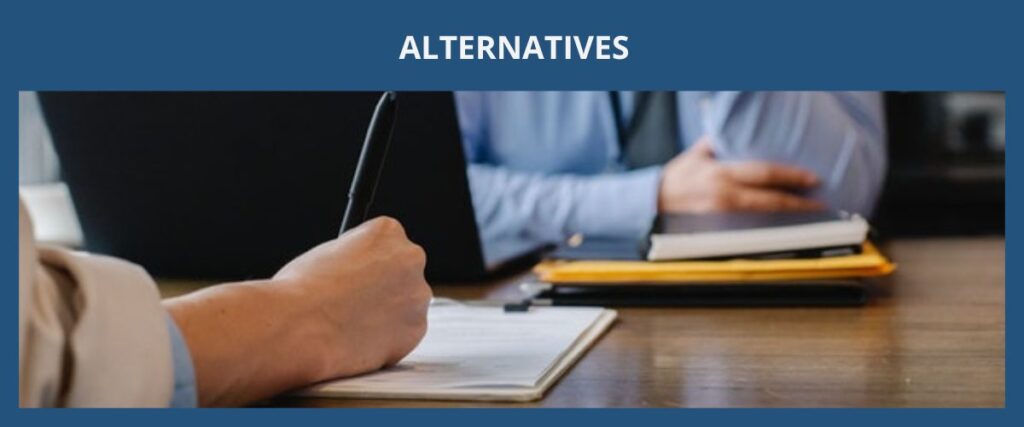
The closest alternatives to filing an H1B3 visa petition would be filing an O1B visa petition which is for persons who have extraordinary ability (i.e., the fashion model must be positively well-known on a national or international level), a P3 visa petition which is for artists or entertainers (individually or as part of a group) coming to the United States to participate in a Culturally Unique Program (e.g., a U.S. company-sponsored fashion model trade show that showcases modeling skills of a foreign country), a P2 visa petition which is for artists or entertainers (individually or as part of a group) coming to the United States to participate in an artistic reciprocal exchange program.
Another possible alternative to filing an H1B3 visa petition would be to file for a green card petition which is a permanent immigrant visa and not a temporary work visa like the H1B3 visa. Typically, a fashion model who is qualifiable for an H1B3 visa would choose to file for an EB1a green card petition. For more on green cards gained through work, please read the overview for employment-based green cards.
The main difference between a green card and a temporary visa (such as an H1B3 visa, H1B visa, H2 Visa, F1 visa, J1 visa, M1 visa, L1 visa, O1 visa, P1 visa, TN visa, E1 visa, E2 visa, E3 visa) is that a green card holder can legally work and freely change jobs among different employers without needing additional filings or approvals from the U.S. government. Also, unlike temporary visas, green cards are permanent so there is no set maximum time on how long a green card holder can stay in the United States.
When the H1B3 visa fashion model decide that they would like to live in the United States permanently and do not want to be subject to the time limitations or the constant filing requirements to extend (renew) their temporary work visa, the next step for them is to file a green card petition. Typically H1B3 visa fashion models will choose to file for an EB1a green card that is for persons who are nationally or internationally recognized with having extraordinary ability in the field of sciences, arts, education, business, or athletics. The EB1a green card petition is one of the fastest ways to obtain an employment-based green card because unlike other employment-based green card categories it does not require a lengthy PERM labor certification and it typically does not encounter visa availability backlog issues. More uniquely, there are no requirements of having a specific U.S. sponsoring employer under the EB1a green card petition which means that it is possible for a fashion model to sponsor (file and pay) for their own green card petition.
Furthermore, a person can qualify for an employment-based green card no matter where they are currently residing in the world. There is no pre-requisite as to the person being in some type of nonimmigrant visa status (such as an H1B3 visa) or having an educational degree from a U.S. school. In other words, a person who does not have a U.S. degree and has never been to the United States can still qualify for an employment-based green card. Thus, even if a person is not in an H1B3 visa status yet but does have the qualifications for an H1B3 visa, they can alternatively choose to file for an EB1a green card petition instead.
If you have an H1B3 visa (Fashion Models) immigration question, please fill out our contact us form or send us an email with some basic information about your background and your immigration needs. We will do our best to respond within 48 hours.
How we can help?
Kylie Huang Law’s immigration attorney will help identify whether the H1B3 visa is the appropriate nonimmigrant visa category for the client’s (or the client’s beneficiary’s) professional background and if there are other visa options for the client (or the client’s beneficiary). We will work closely with our client to prepare a convincing case for their (or it’s) H1B3 visa petition and we will also strategize on how the H1B3 visa petition should be presented to achieve the best chances of approval. It is strongly advised and common practice to retain an immigration attorney for an H1B3 visa petition due to the complexities in the immigration process and visa requirements.
What does the typical process look like to retain (hire) us?
- Step 1:
- Step 2:
- Step 3:
- Step 4:
- Step 5:
- a.
- b.
- c.
- Step 6:
- Step 7:
- Step 8:
- Fill out the form (with some basic information on what your immigration needs are)
- Sign up and log into the client portal to schedule an appointment online
- Attend scheduled appointment (typically a phone call or zoom meeting)
- Retainment (signing a contract to hire us)
- Start processing case
- Gathering required documents
- Preparing paperwork
- Confirming contents of documents that will be submitted
- Filing the case
- Following up on the status of the case
- Close the case when a final determination is issued
- Step 1:
- Step 2:
- Step 3:
- Step 4:
- Step 5:
- a.
- b.
- c.
- Step 6:
- Step 7:
- Step 8:
- Fill out the form (on what your immigration needs are)
- Sign up and log into the client portal to schedule an appointment
- Attend scheduled appointment (typically a phone call or zoom)
- Retainment (signing a contract to hire us)
- Start processing case
- Gathering required documents
- Preparing paperwork
- Confirming contents of documents that will be submitted
- Filing the case
- Following up on the status of the case
- Close the case when a final determination is issued
- Step 1:
- Step 2:
- Step 3:
- Step 4:
- Step 5:
- a.
- b.
- c.
- Step 6:
- Step 7:
- Step 8:
- Fill out the form (on what your immigration needs are)
- Sign up and log into the client portal to schedule appointment
- Attend scheduled appointment (typically a phone call or zoom)
- Retainment (hire us)
- Start processing case
- Gathering required documents
- Preparing paperwork
- Confirming content of documents that will be submitted
- Filing the case
- Following up on the case status
- Close the case when a final determination is issued
RELATED ARTICLES
- H2A Visa (Agricultural Workers)
- H2A Visa Checklist (Agricultural Workers)
- TN Visa (NAFTA Professionals)
- E3 Visa (Australian Specialty Workers)
- L Visa Overview (Intra-Company Transferee)
- P visa Overview (Athlete & Entertainer)
- O Visa Overview (Extraordinary Ability / Achievement)
- E Visa Overview (Treaty Trader & Investor)
- Employment-Based Green Card Overview
- H1B3 Visa Checklist (Fashion Models)
- H Visa Overview (Specialty Occupations)
- H1B Visa (Specialty Occupations)
- H1B Visa Requirement & Documents (Specialty Occupations)
- H1B Visa Checklist (Specialty Occupations)
- H2B Visa (Temporary Skilled & Unskilled Workers)
- H2B Visa Checklist (Temporary Skilled & Unskilled Workers)

